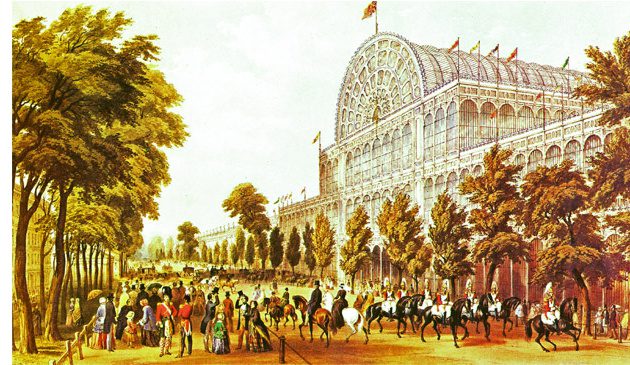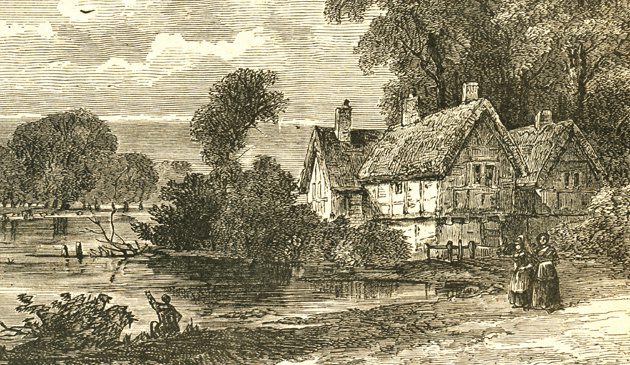St. James’s Park and Green Park – the making of the modern parks

The Temple of Peace in Green Park looking from the viewpoint of St. James’s Palace. It was created for the celebrations to mark the peace settlement of Aix le Chapelle in 1748 following the end of the War of the Austrian Succession. On the left of this contemporary print stands Buckingham House, the future royal palace. Constitution Hill passes from Green Park into St. James’s Park through the gate on the left of the temple. Hyde Park is in the background. Above the temple a thirty feet diameter representation of the sun stands on a fifty feet high pole, which was planned to illuminate the proceedings. Handel composed ‘Music for Royal Fireworks’ for the event.
Queen Victoria and Prince Albert regularly travelled along Constitution Hill in a carriage, and there were several failed assassination attempts. In June 1840 Edward Oxford fired a pistol from close range but the Queen ducked in time. Oxford spent 24 years in an asylum before being sent to Australia. The Prince noticed a man pointing a gun, which failed to fire, as they travelled along The Mall in May 1842. The following day the Queen and Prince travelled the same route and the man, John Francis, made a second attempt but was arrested. Just two months later a hunchback named John Bean fired a pistol at Victoria in The Mall but it was only loaded with pieces of tobacco pipe. He escaped and all hunchbacks in London were under suspicion until he was apprehended. The Irishman William Hamilton aimed a pistol at the Queen on Constitution Hill in May 1849 but it was not loaded because he only wanted to be arrested. He was banished to Gibraltar. Sir Robert Peel, the former Prime Minister, was thrown from his horse on Constitution Hill by the gate into Green Park in 1850 and died three days later.
Following the death of Queen Victoria a statue was planned in her memory and it was decided to locate it to the front of Buckingham Palace between St. James’s Park and Green Park. The statue was created by Sir Thomas Brock and dedicated in 1911. To accommodate it The Mall was shortened and a new road layout created around the monument. It is surrounded by the semi-circular Memorial Gardens and the four Dominion Gates that celebrated various parts of the British Empire. The whole scheme was designed by Sir Aston Webb.
The cost of the monument was provided by public donations and governments of countries of the Empire. More was donated than necessary so at the other end of The Mall Aston Webb created the Admiralty Arch that forms a gateway between St. James’s Park and Trafalgar Square. In the 1950s the surface of The Mall was coloured red to give the impression of a giant red carpet leading to Buckingham Palace.
Some of the most important government offices are located along the eastern side of St. James’s Park on the site of the former Whitehall Palace. These include the Prime Minister and Chancellor of the Exchequer’s offices at Downing Street, the Foreign Office, the Treasury, and the Scotland Office at Dover House. Also, at that end of the park is the Horse Guard’s parade ground.
In recent years Green Park has become a place of remembrance to those who served in the two World Wars. A memorial to the million Canadian servicemen by the Quebec artist Pierre Granche was unveiled by the Queen near Canada Gate in 1994. In 2002 the Queen inaugurated memorial gates on Constitution Hill to servicemen from across the former Empire. The RAF Bomber Command memorial near Hyde Park Corner was unveiled in 2012.
Sources include: Neville Braybrooke ‘London Green’ (1959); Alicia Amherst ‘London’s Parks and Gardens’ (1907); John Martin Robinson ‘Buckingham Palace’; Edward Walford ‘Old & New London’ (1897); ‘The Wellington Arch and The Marble Arch’ English Heritage.


